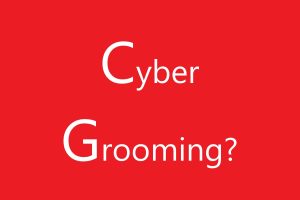Digital Disguise
The internet, a vast and interconnected realm, has transformed the way we communicate, share information, and express ourselves. At the heart of this digital revolution lies the intriguing concept of anonymity, a tool that enables users to navigate the online world without revealing their true identities. In this article, we’ll delve into the fascinating realm of digital disguise, exploring the benefits, risks, and the evolving landscape of online anonymity.
I. The Power of Digital Disguise:
A. Freedom of Expression:
Anonymity serves as a powerful catalyst for free expression in the online world. Users, shielded by the cloak of anonymity, feel more liberated to voice their opinions, share unconventional ideas, and engage in open discourse without the fear of real-world consequences. This freedom fosters a diverse and vibrant digital community where ideas can flow freely, contributing to a rich tapestry of perspectives.
B. Whistleblowing:
One of the most crucial aspects of anonymity is its role in encouraging whistleblowing. Individuals who witness wrongdoing or corruption may be hesitant to come forward due to fears of retaliation. Anonymity provides a protective barrier, empowering whistleblowers to expose malpractices without the fear of personal consequences. Platforms that allow for anonymous submissions have become instrumental in promoting transparency and accountability.
II. The Dark Side of Anonymity:
A. Cyberbullying:
While anonymity can be a force for good, it also has a dark side. The online realm has witnessed an alarming rise in cyberbullying, fueled by individuals who exploit the veil of anonymity to engage in malicious activities. Cyberbullies, shielded from accountability, target victims with harmful intent, causing emotional distress and psychological harm. Striking a balance between privacy and preventing online harassment remains a significant challenge.

B. Online Harassment:
Anonymity can embolden individuals to indulge in harmful behavior, leading to online harassment that transcends virtual boundaries. Victims of online harassment often find it challenging to seek justice, as tracing the perpetrators becomes a complex task. Balancing the right to online privacy with the need for accountability is a pressing concern that authorities and digital platforms grapple with.
III. Tools for Digital Disguise:
A. Virtual Private Networks (VPNs):
To enhance privacy and security online, users turn to Virtual Private Networks (VPNs). These tools mask users’ IP addresses, making it difficult for third parties to track their online activities. VPNs play a crucial role in safeguarding user data and ensuring a level of anonymity while surfing the internet.
B. Tor Browser:
The Tor network provides another layer of anonymity by routing users’ internet traffic through a series of volunteer-operated servers. This decentralized approach helps users access the internet anonymously, protecting their identity and activities from prying eyes.
C. Proxies for Scrapebox:
When it comes to online activities that require discretion, such as web scraping, having the right tools is essential. Proxies for Scrapebox offer a solution to users looking to scrape data from websites without revealing their IP addresses. These proxies provide an added layer of anonymity, ensuring a secure and discreet web scraping experience.
IV. Balancing Privacy and Accountability:
A. Legal Implications:
Governments and regulatory bodies face the challenge of striking a balance between protecting individuals’ right to privacy and ensuring accountability in cases of illegal activities conducted under the guise of anonymity. Finding legal frameworks that address these concerns is an ongoing endeavor that requires careful consideration.
B. Tech Industry Initiatives:
Digital platforms and tech companies are exploring innovative solutions to address the challenges posed by anonymity. Striking a balance between protecting user privacy and preventing misuse of online platforms is a shared responsibility. Initiatives such as advanced user verification and moderation algorithms aim to create safer online spaces.
V. Future Trends in Online Anonymity:
A. Blockchain Technology:
The decentralized nature of blockchain technology holds promise in reshaping the landscape of online anonymity. Blockchain-based solutions may provide users with secure and anonymous transactions, reducing the risk of identity exposure during online interactions.
B. Advanced Encryption:
Ongoing developments in encryption technologies aim to provide users with stronger protection against surveillance and cyber threats. Enhanced encryption protocols can fortify the walls of digital privacy, ensuring that users can enjoy the benefits of anonymity without compromising their security.
Conclusion:
As we navigate the complex and ever-evolving digital landscape, the concept of digital disguise through anonymity continues to shape our online experiences. While it empowers users to express themselves freely and blow the whistle on wrongdoing, it also poses challenges such as cyberbullying and online harassment. Striking the right balance between privacy and accountability remains a paramount concern. As technology advances, the future holds the promise of even more sophisticated tools for digital disguise, underscoring the need for a thoughtful and ethical approach to online anonymity.
Also Read: Do you know what cyber grooming is? Very Dangerous


